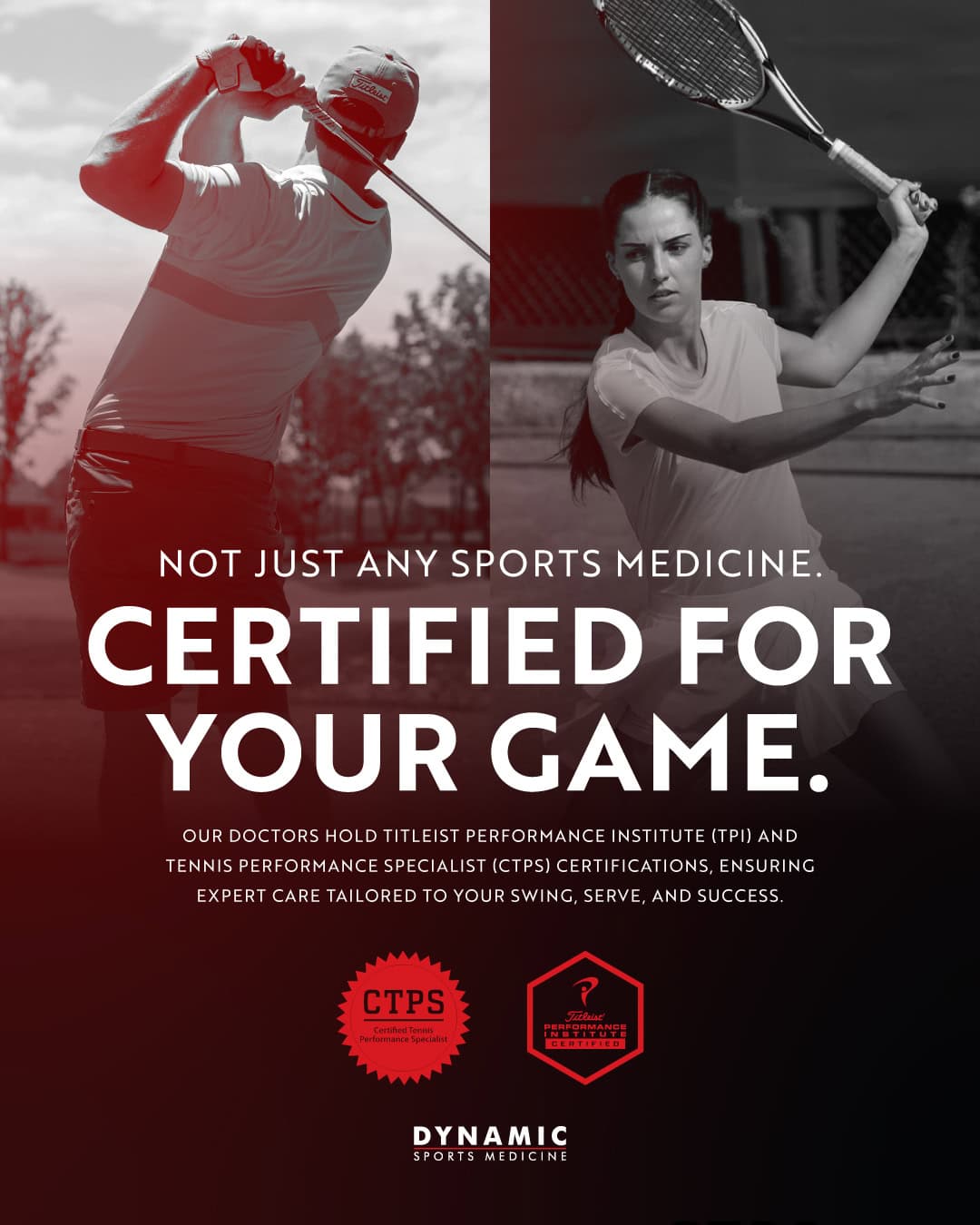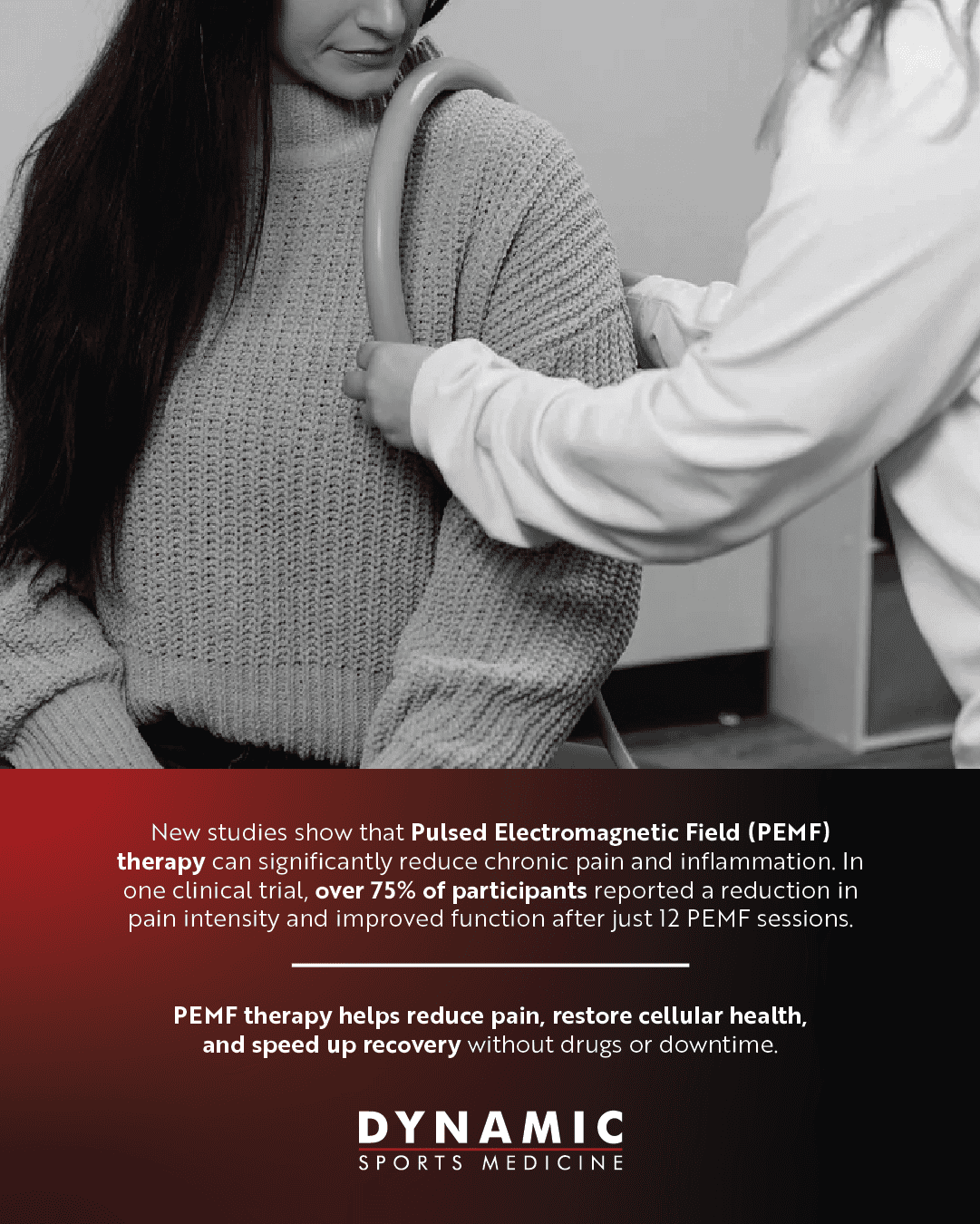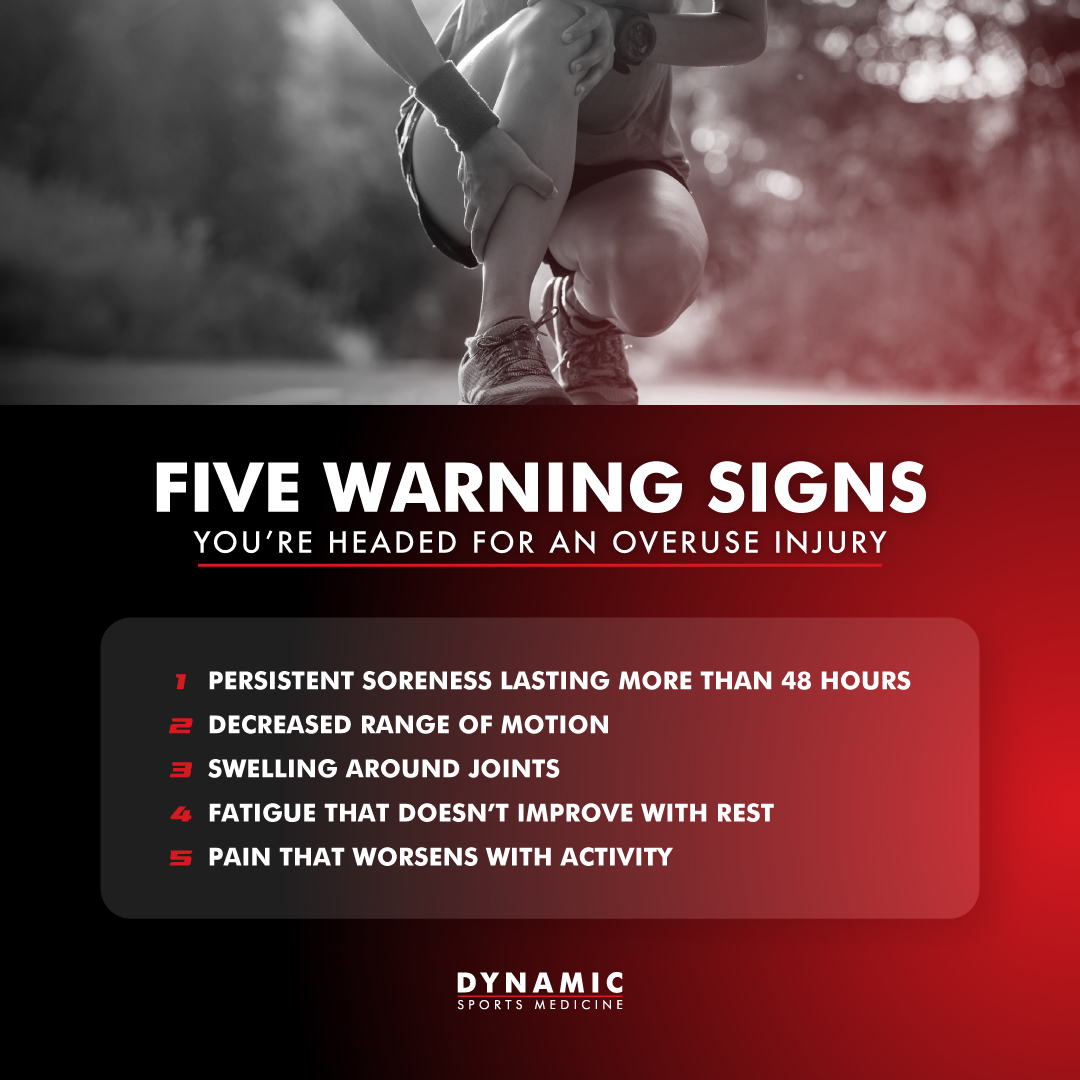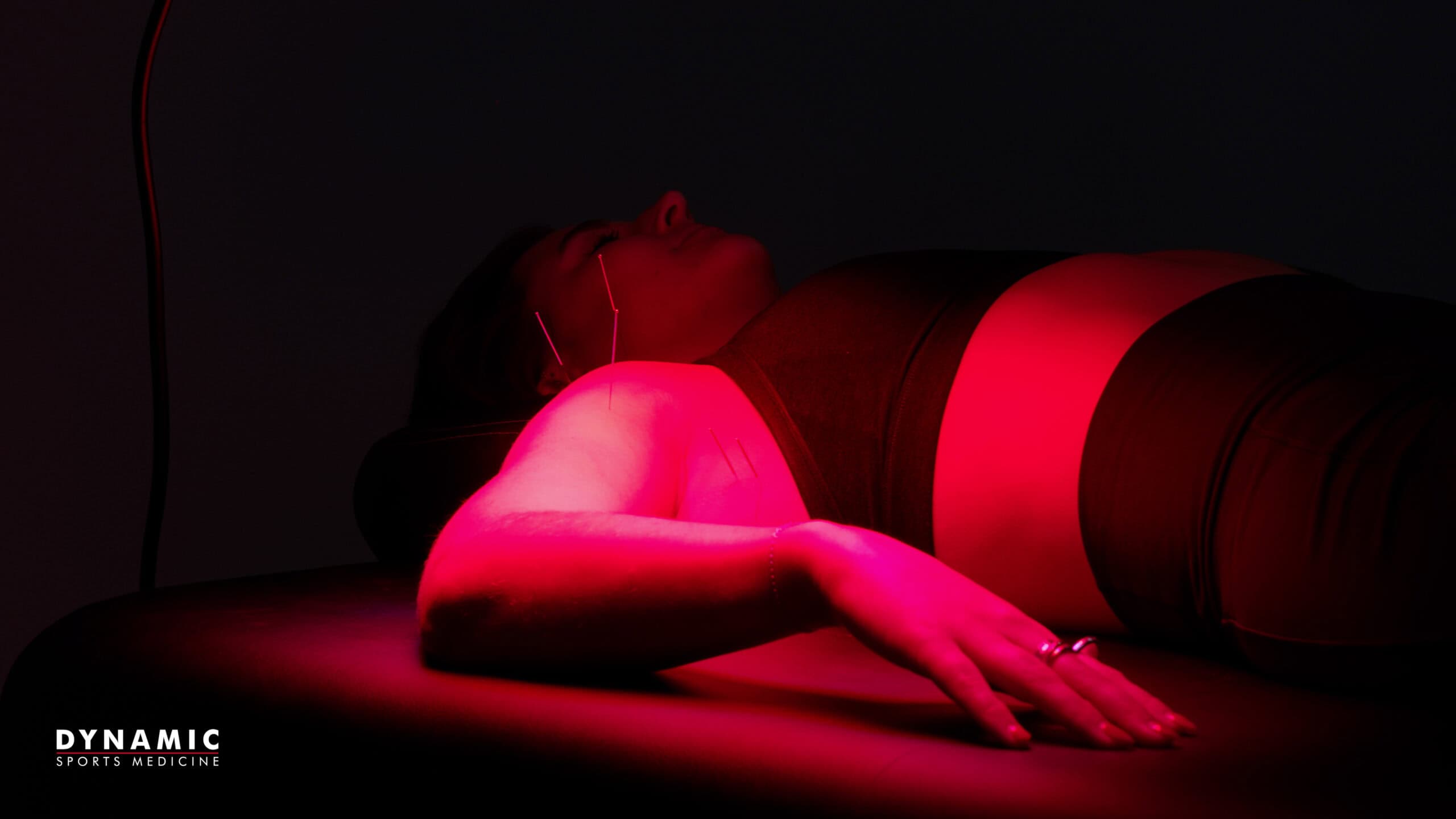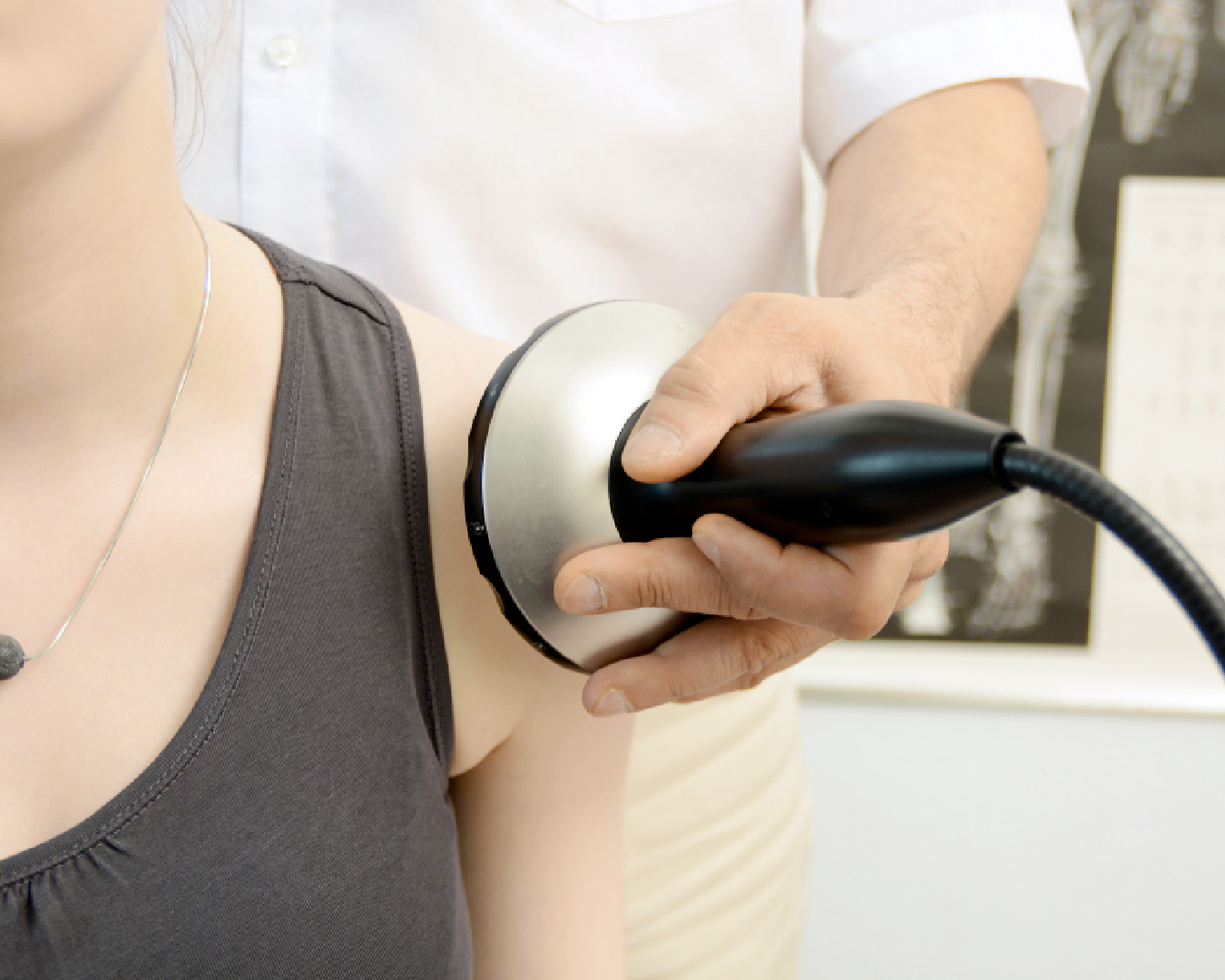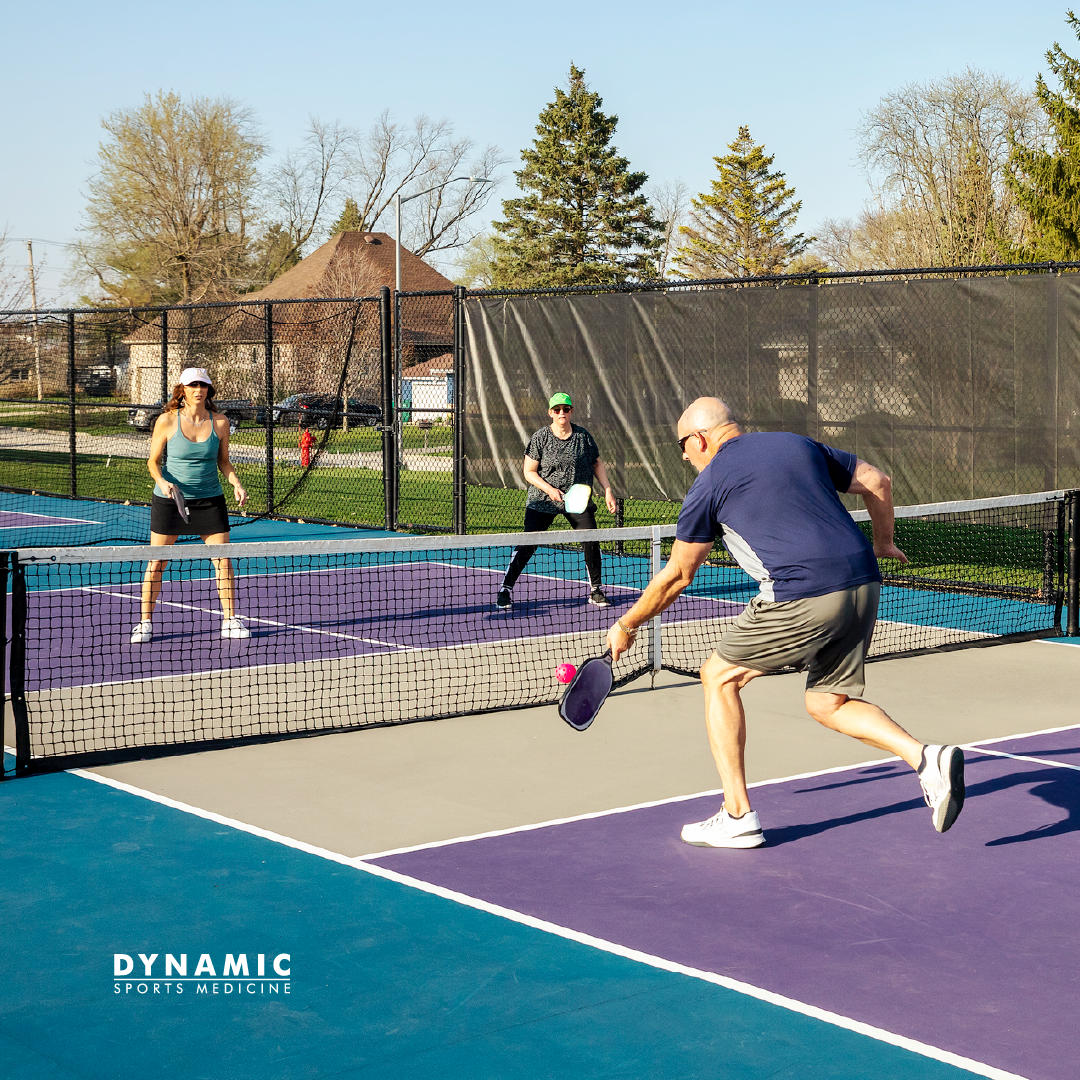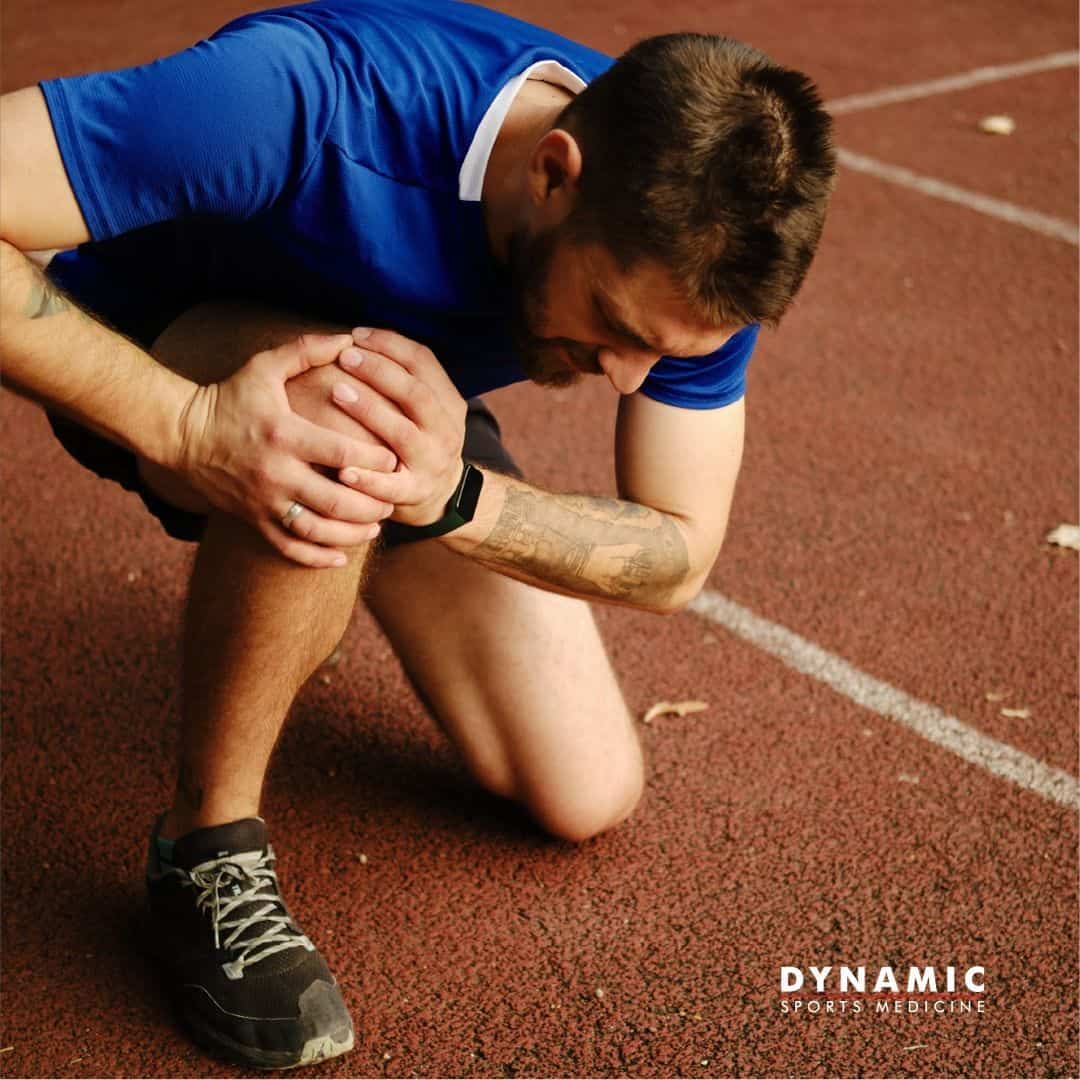At Dynamic Sports Medicine, we believe that optimal performance isn’t just about training harder — it’s about training smarter. That’s why our team goes beyond traditional care to deliver precision treatment tailored to the unique biomechanics of your sport.
Whether you’re working on your swing, fine-tuning your serve, or looking to move with more power and control, our specialists are equipped to help you perform your best — and stay in the game.
Why Certification Matters in Sports Medicine
Not all sports medicine providers are created equal. At Dynamic Sports Medicine, our doctors hold advanced certifications through two of the most respected organizations in the athletic performance world:
Titleist Performance Institute (TPI)
TPI-certified providers specialize in evaluating the movement patterns of golfers. Through in-depth physical screening, we identify the root causes of pain, stiffness, or inconsistencies in your swing. From there, we develop a plan that restores mobility, improves strength, and enhances your efficiency — helping you hit farther, move better, and recover faster.
Certified Tennis Performance Specialist (CTPS)
CTPS certification focuses on the physical demands of tennis. From shoulder mechanics to lower body explosiveness, our tennis-specific assessments and treatments are designed to reduce injury risk and improve on-court performance. Whether you’re preparing for a tournament or managing an old injury, our providers help you play pain-free and with confidence.
More Than Just Injury Care — We’re Performance Partners
At Dynamic Sports Medicine, we’re proud to support athletes at all levels — from weekend warriors to professionals — with tailored care that prioritizes movement quality, sport-specific demands, and long-term performance.
When you book with us, you’re getting:
-
✅ One-on-one attention in a private treatment room
-
✅ Detailed functional movement assessments
-
✅ Performance-driven rehabilitation and strength programming
-
✅ The trust of top athletes across Texas
Ready to Perform Your Best?
If you’re ready to move beyond generic treatment and start working with a provider who understands the demands of your sport, we’re here to help. Whether you’re a golfer, a tennis player, or an athlete in training, our certified providers will help you move stronger, faster, and smarter.
Schedule an appointment today and take the first step toward peak performance.
